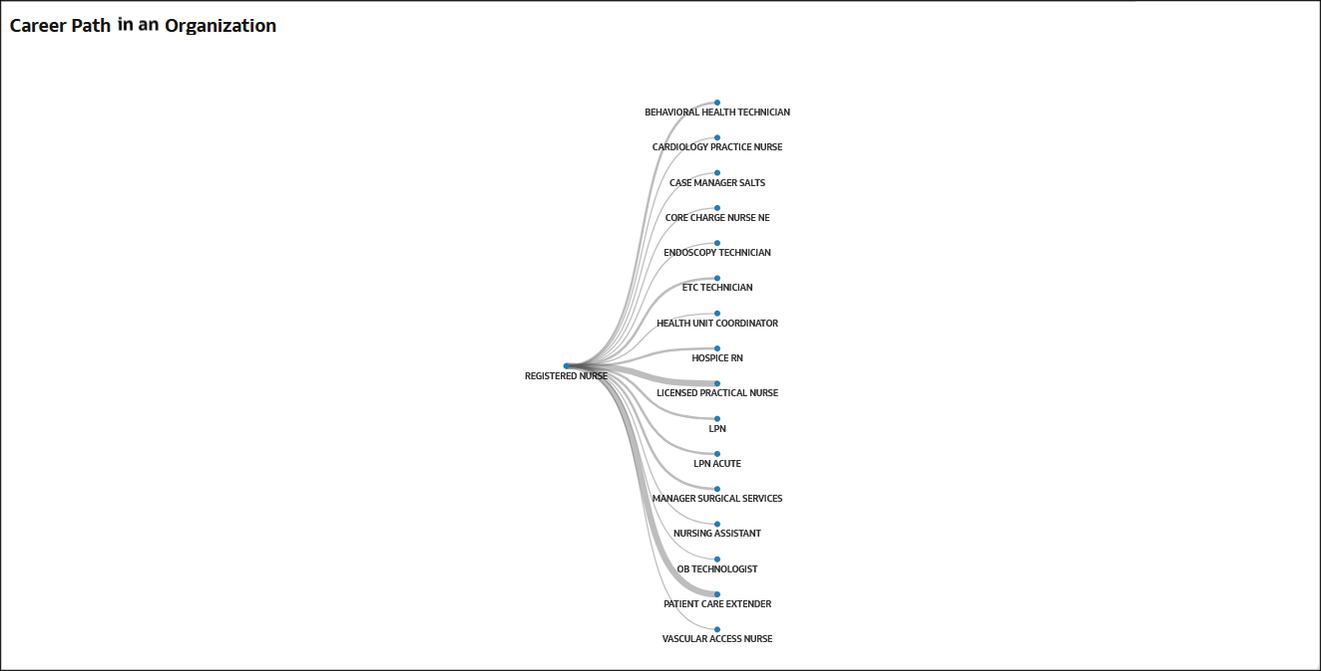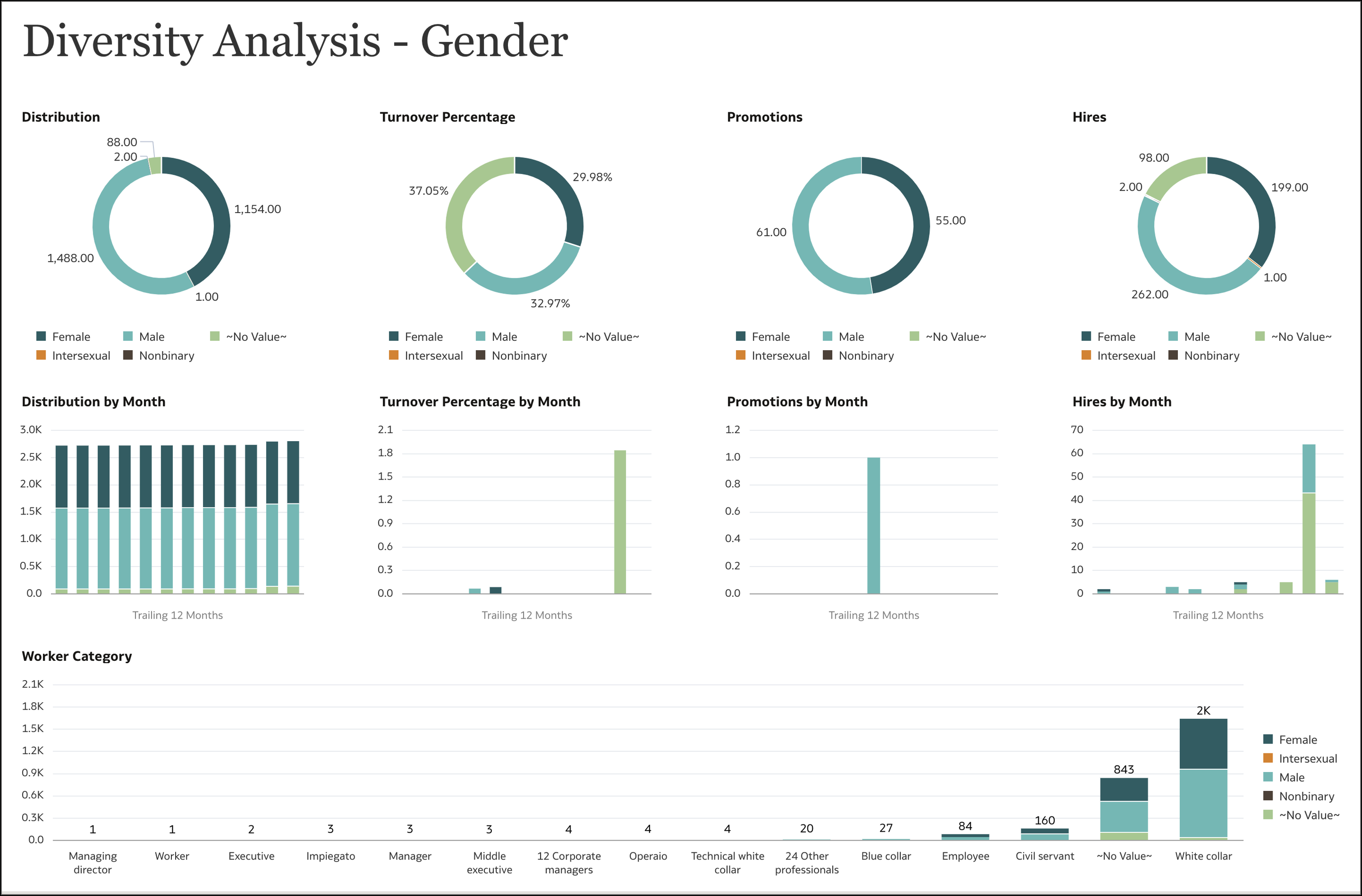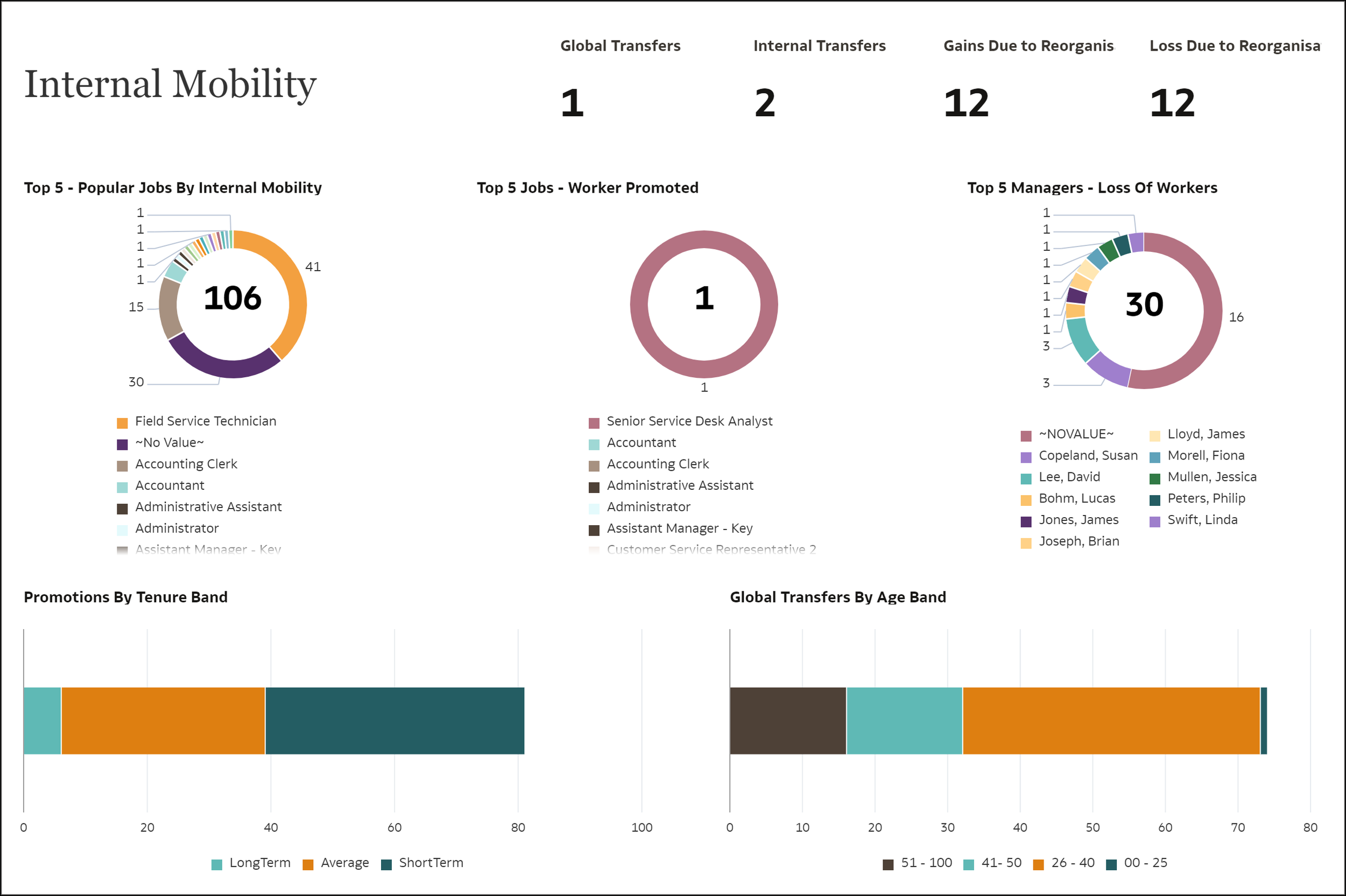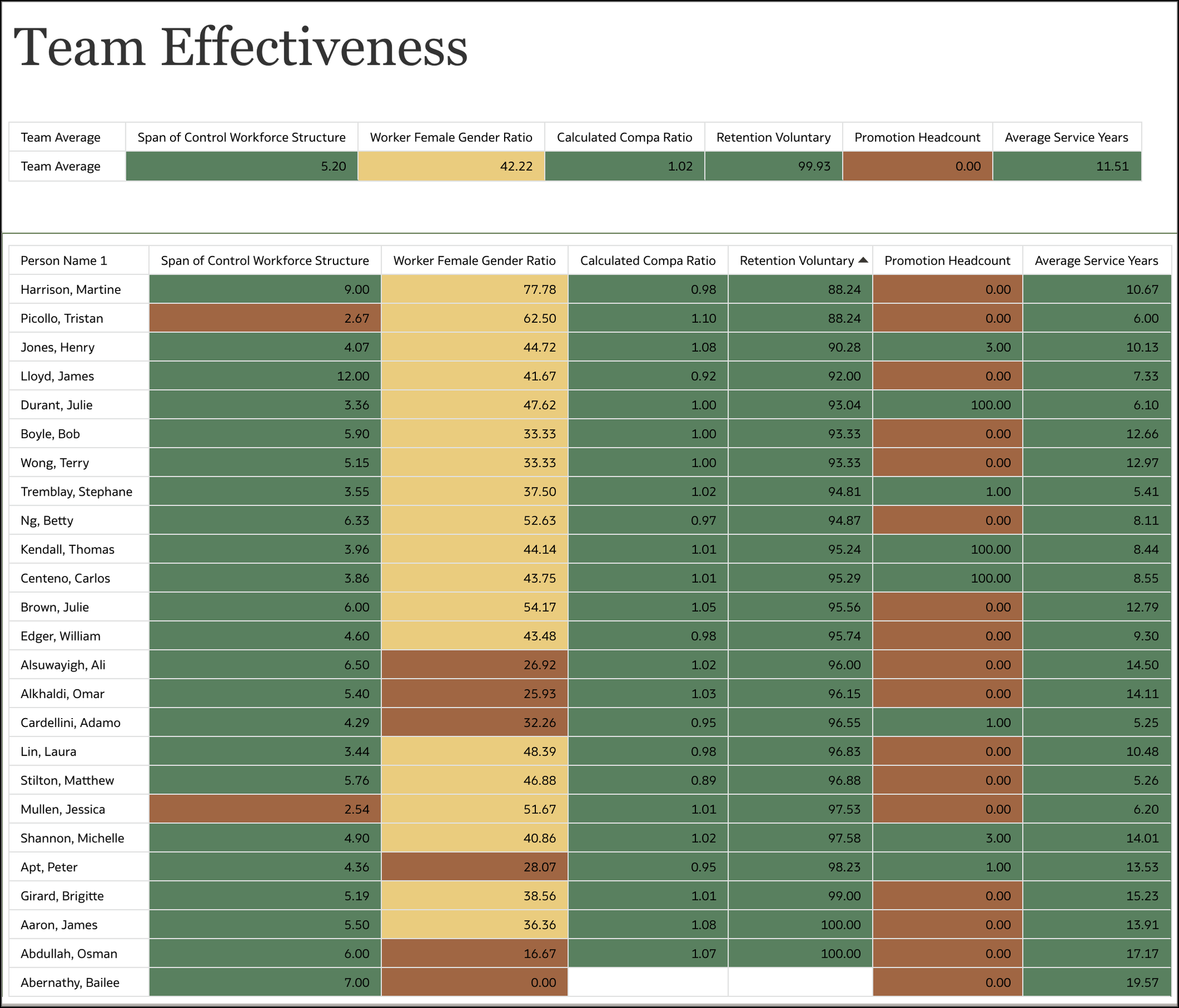So, you want to build a healthy, high-performing company, and you want to make sure that your company is built so it can scale. When you think about all the critical components of construction, it’s important to remember the most crucial element: people.
The people who comprise your workforce are the key component to a healthy and high-growth capacity company. But how do you empower yourself with the knowledge and understanding of your workforce performance, gaps, weaknesses, and team pain points, and then identify and replicate successful sector models across the organization?
The answer is people analytics.

We’re fortunate to live in an era of technological innovations, and among them are deep, rich analytics capabilities that enable us to tap into human resource data. That data paves the way for us to understand and model human behavior in the same way we understand economics and finances. For business leaders, this is empowering. With Oracle Fusion HCM Analytics, you can derive rich insights that help you to build a healthy high-performing company that scales, and the result is the ultimate win-win: a well-formed company and workforce comprising happy employees who thrive at their ultimate potential.
The business impacts are vast. With people analytics, you can build a company that:
- Performs better financially
- Makes improved decisions
- Offers a better trajectory for career growth to its employees
- Creates stronger retention rates for employees
- Sparks improved productivity and creativity from all team members
The question, then, is how do you get started?
Of course you’ve already adopted Oracle Fusion HCM Analytics, which means you can break down your data to delve deeper into the three pillars of health for a high-performing company.
Pillar 1 – Diversity and Inclusion
The diversity and inclusion pillar is far too often delegated as a special category, but the reality is that if you truly want to thrive as a company, you need to think about it in terms of every single business process. It’s one of the hottest topics today, and there’s a lively debate about whether creating diversity and inclusion is an art or a science. The reality is that it’s both. Tapping into the science of analytics enables you to create strategies to better foster diversity and inclusion in the workplace. Because this pillar is so immensely people-focused, strategies for creating and maintaining diversity and inclusion work best when they’re tied to actual economic outcomes.

And the hard truth is that there are countless studies proving that companies that promote diversity and inclusion are the healthiest and most productive. Giving workers the freedom to be their authentic selves at the office also empowers them to function at their optimal levels.
Analytics tools from Oracle give you the power to drill down on diversity and inclusion details including dashboards that explore gender, ethnicity, age groups, country of residence, and even tenure length.
Pillar 2 – Growth
A culture that promotes internal mobility doesn’t just provide career growth for its employees but also enables its leaders and managers to optimize their workforce as well. This is one of the fastest and easiest ways for a company to scale.
But how do you tap into your workforces’ skills and competencies in order to maximize them? This is a particularly crucial question for 2023 as workplaces aim to reinvent and reorganize in a post-pandemic landscape where many of the goalposts have shifted and the economic outlook is increasingly uncertain.
On the dashboards for Oracle Fusion HCM Analytics, you can arm yourself with the insights you need.

For example, suppose that you want to know how internal mobility, diversity, and inclusion have been promoted in the company. No one pillar stands without the other. Of the employee losses and gains that happened in the past year, you can drill down by gender to see if managers need training by bias or if hiring strategies need to shift. You can also explore data by employee perspective and show these visualizations to employees to help them understand the potential career advancement paths that they can take.
Pillar 3 – Teams
There is no one among us who works alone. All of us, no matter what our job is, work at some level as part of a team, and today in this world of social distancing and remote work, connecting with our teams and syncing up for maximum efficiency is harder than ever.
But team effectiveness is massively important. To move toward growth, managers and frontline executives must understand what’s happening with their teams. Analytics is the best way to do just that.
With effective analytics, you can choose the definition of a team, making it as small as a five-person group collaborating on a project or as large as an entire country. You can then shift your KPIs as business shifts, allowing, in one quick glance, for comparisons between retention, tenure, engagement, and all sorts of critical benchmarks.

You can also loop back to your other important pillars and explore how diversity affects your KPIs, how growth is changing or shifting among different teams, and what the facts affecting it may or may not be, and soon you have a much clearer and wider understanding of who is working at their best capacity, where your weaknesses lie, and best of all, how you can address and remedy the discovered pain points.
At the end of the day, technology is simply a tool. But when you take that technology and apply it to the people who make your company tick, you turn it into a solution. By deploying the power of people analytics, your company can grow and thrive at an exponential rate. And that’s immensely powerful.
To learn about Oracle Fusion HCM Analytics, check the help center documentation and follow us on Twitter@OracleAnalytics.
